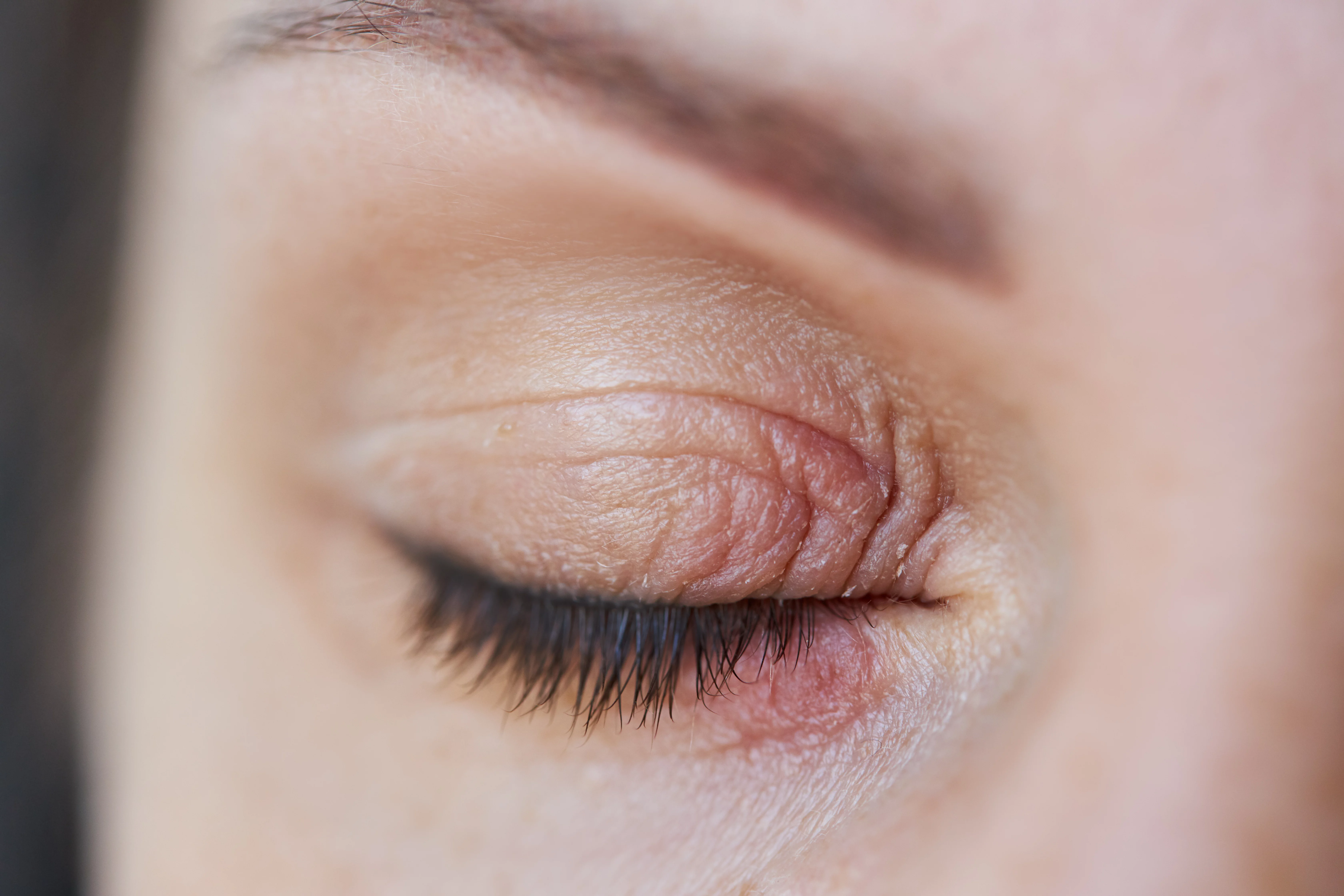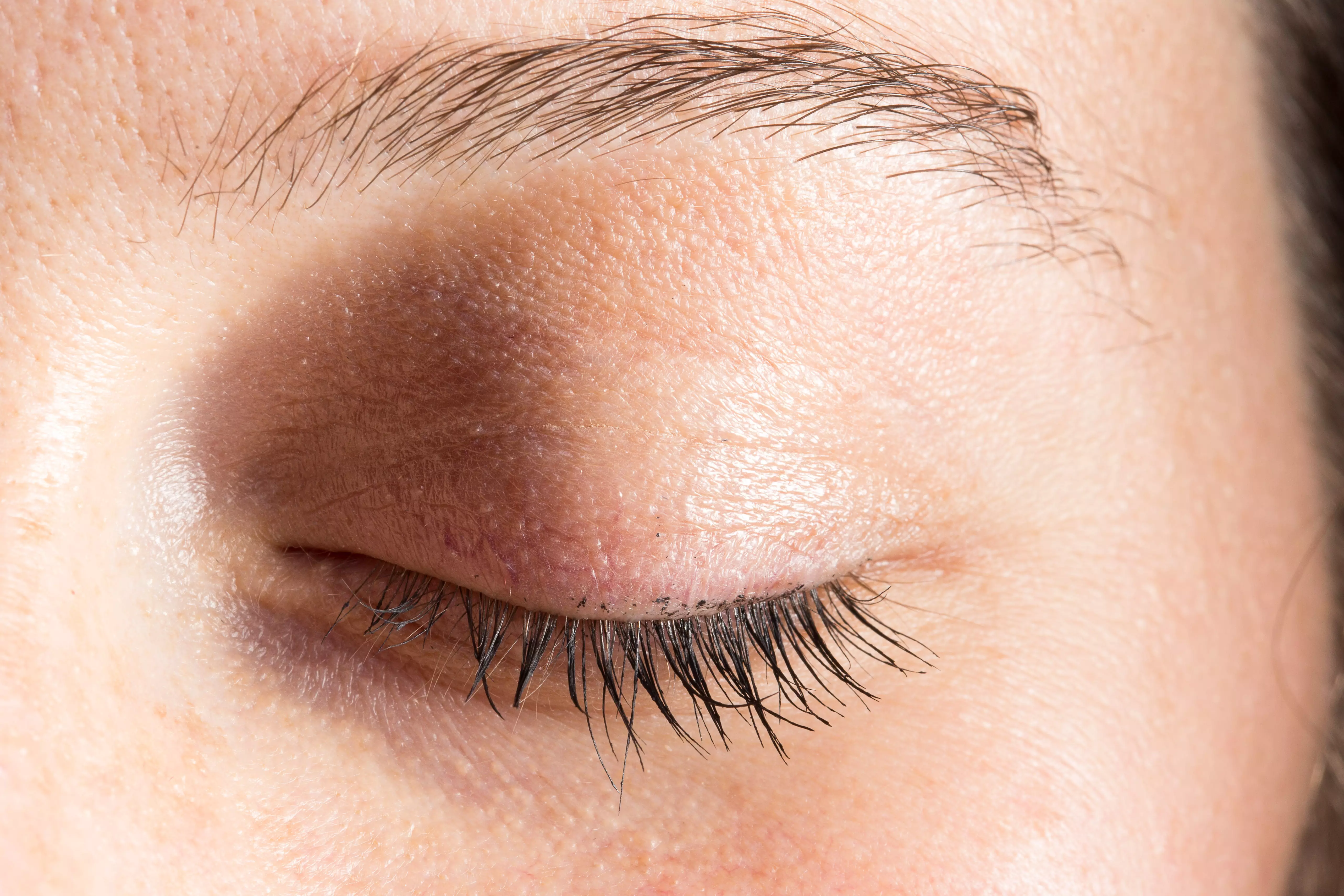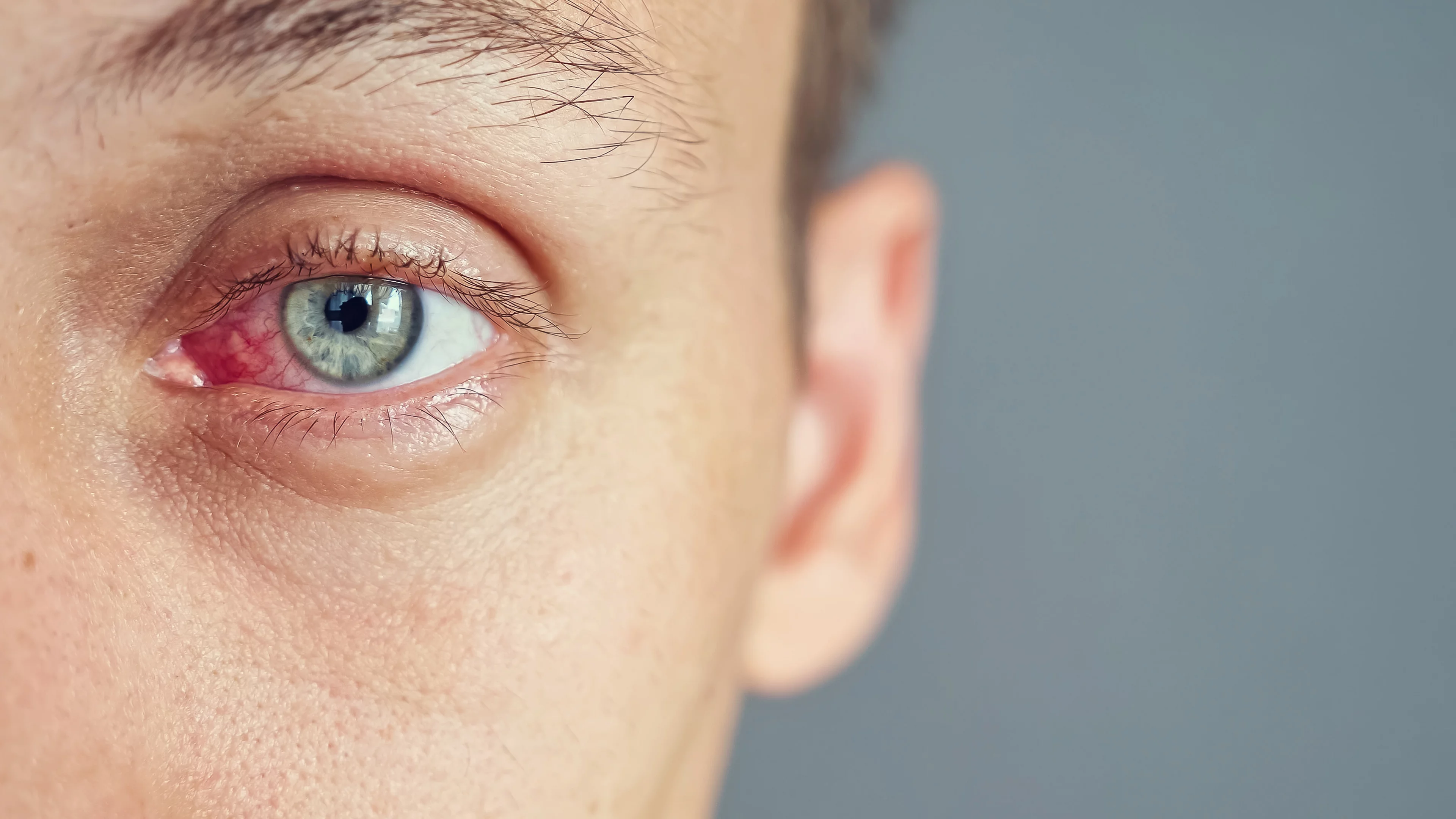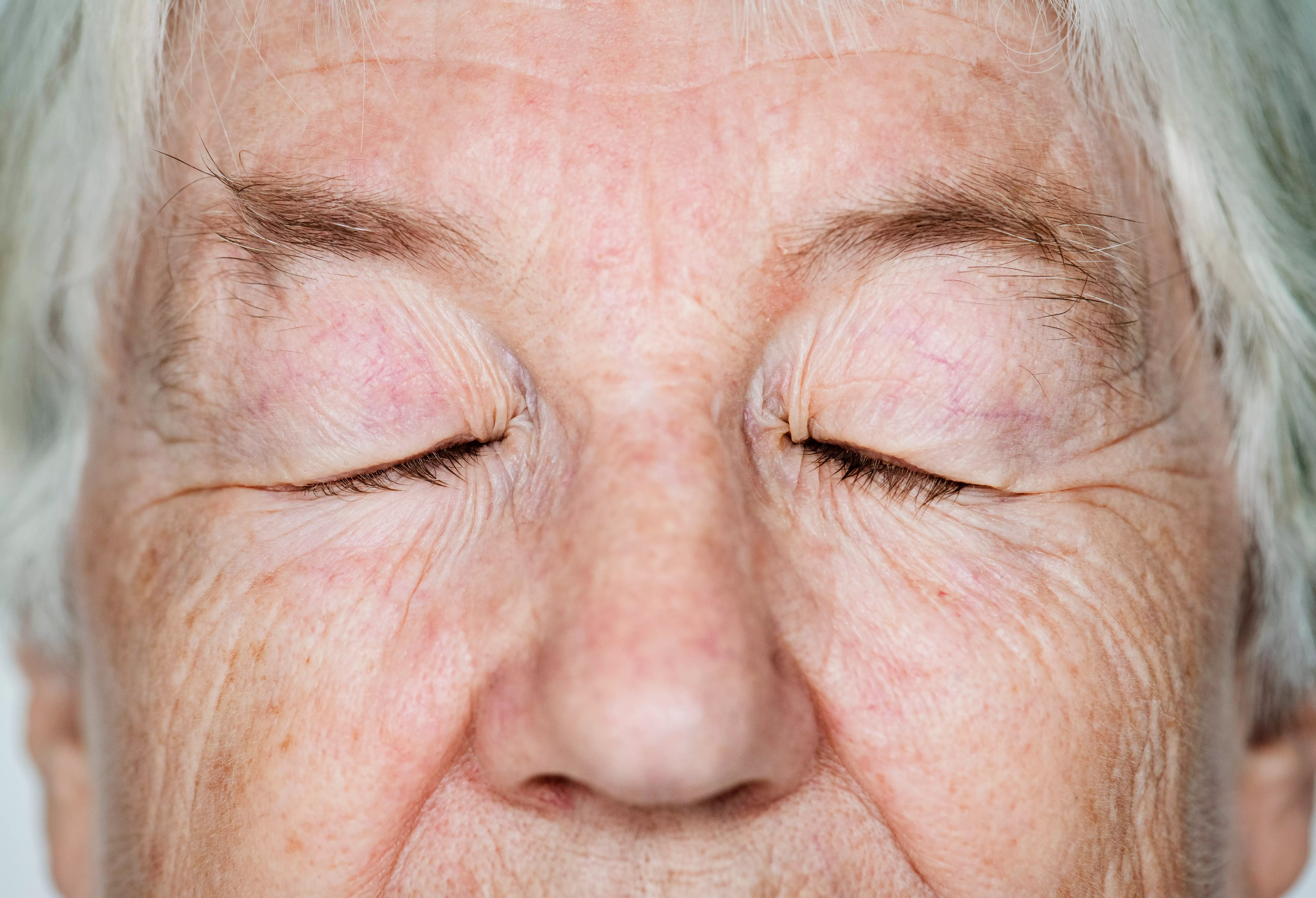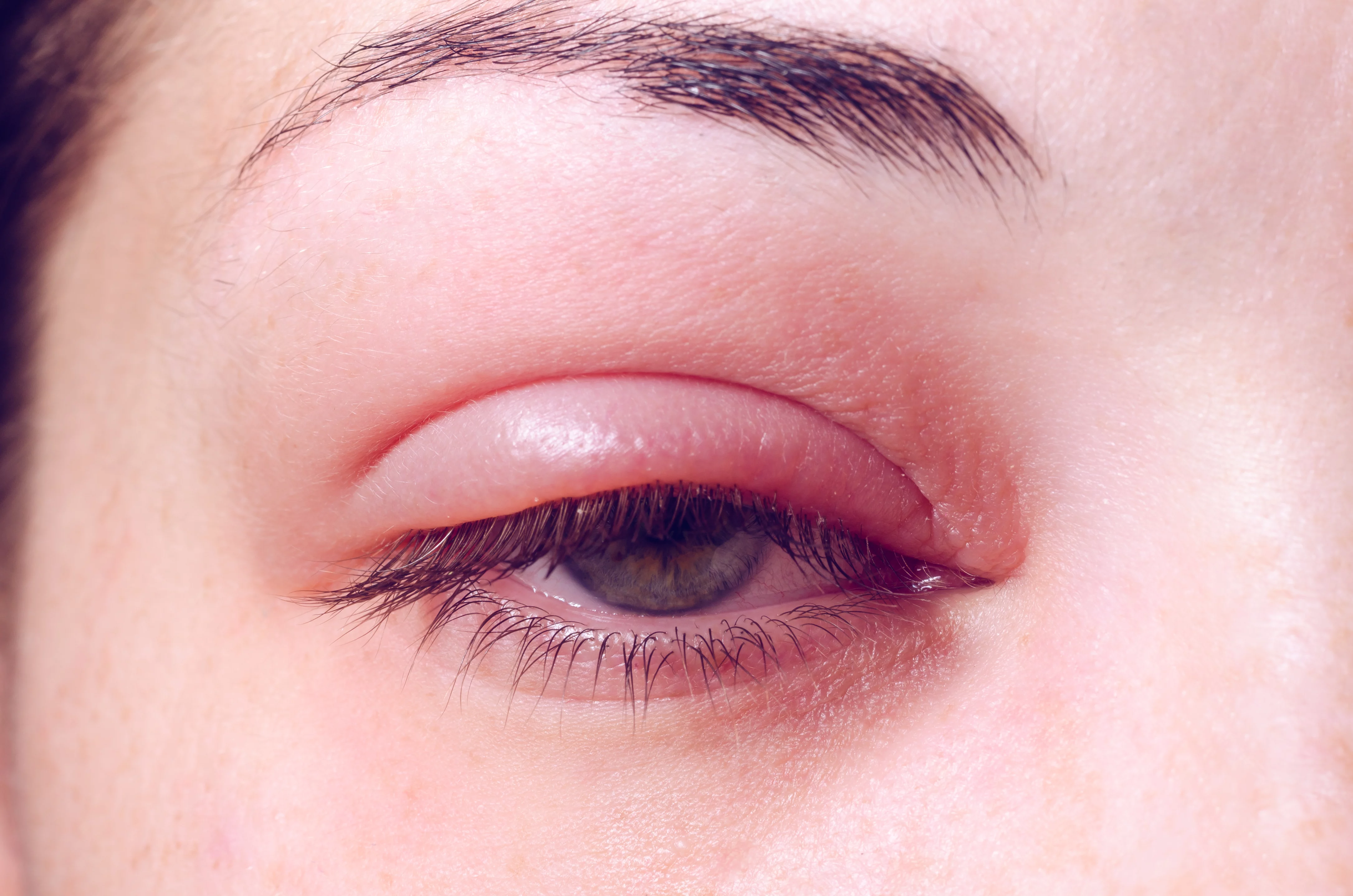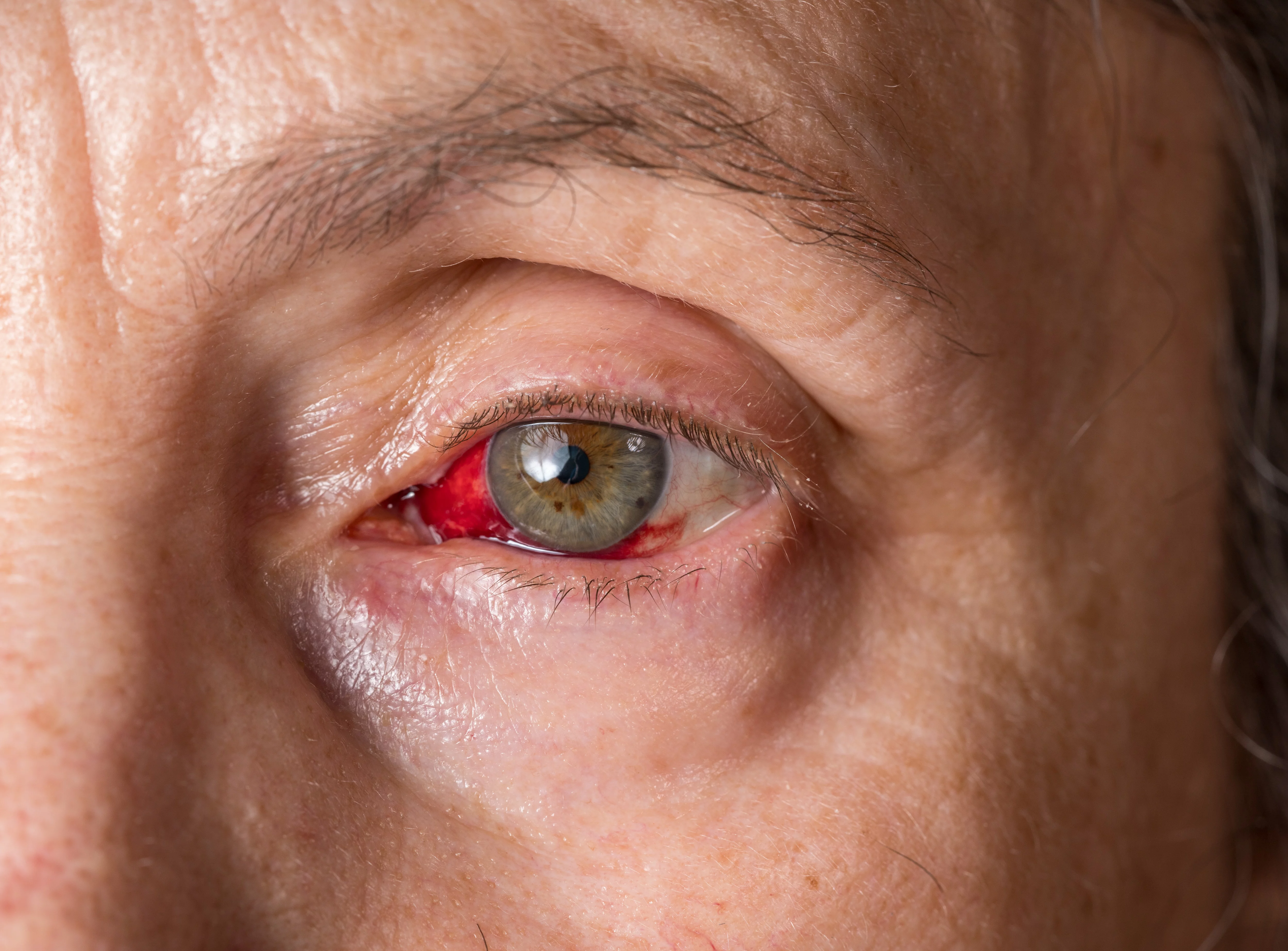Allergic conjunctivitis

The most common ocular allergy in both adults and children is allergic conjunctivitis⁴⁻⁵, which manifests itself as a hypersensitivity reaction to environmental allergens. To better understand this condition, we need to know that it involves the conjunctiva, i.e. the membrane surrounding the white of the eye².
There are different types of allergic conjunctivitis, with different symptoms:
- Seasonal allergic conjunctivitis is a disease caused by hypersensitivity to certain pollens².
- Allergic conjunctivitis predominates in spring and early summer. For the rest of the year, symptoms diminish or disappear. It is most often associated with allergic rhinitis⁴.
- Permanent allergic conjunctivitis (perennial conjunctivitis) mainly affects adults. Its manifestations are constant with periods of recrudescence⁴. Household allergens are particularly implicated in this form of conjunctivitis.
Atopic conjunctivitis is also caused by a reaction to the environment, and manifests as general signs of atopy such as eczema or asthma².

